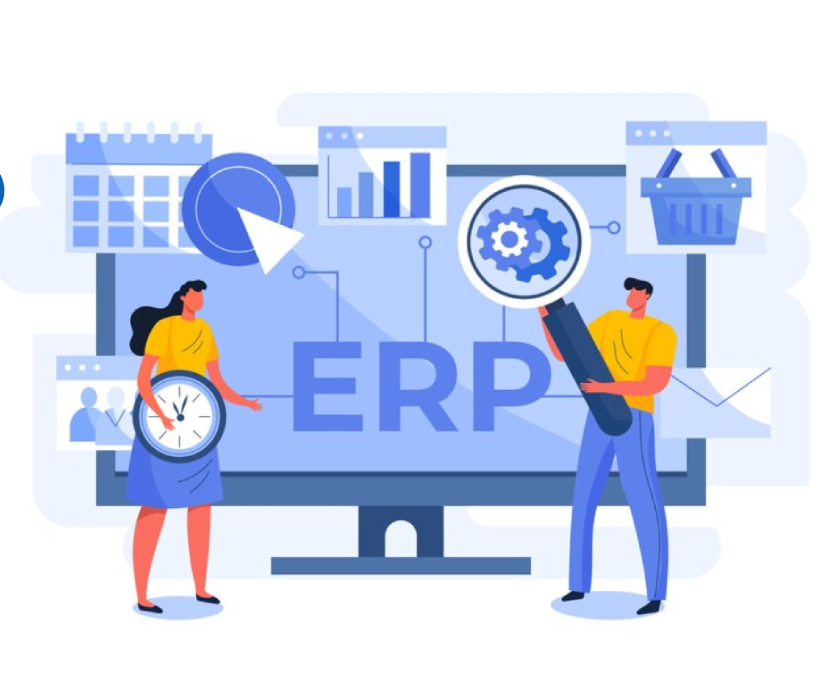
In today’s fast-paced digital landscape, businesses are under constant pressure to streamline operations, reduce costs, and stay competitive. Enterprise Resource Planning (ERP) systems have emerged as powerful tools to unify and automate core business functions—ranging from finance and inventory to human resources and customer relations. This modern guide explores how ERP solutions are transforming traditional workflows, enabling real-time decision-making, improving efficiency, and offering organizations the agility they need to adapt and grow in a dynamic market environment. Whether you're a startup or an established enterprise, embracing ERP can be a game-changer in your journey toward operational excellence.
Key Function
1. Centralized Data Management
Centralized Data Management refers to storing and managing all business data—such as inventory, sales, customer information, and supplier details—in a single, unified system. This approach eliminates data silos, improves accuracy, and ensures consistency across departments and locations. With centralized data, businesses can streamline operations, enhance decision-making, and gain real-time visibility into key metrics. It also simplifies system integration and reduces duplication of effort.
2. Automation of Core Processes
Automation of Core Processes involves using technology to perform essential business functions—such as inventory updates, order processing, invoicing, and reporting—without manual intervention. Automating these tasks reduces human error, saves time, and increases overall efficiency. It allows businesses to scale operations smoothly while focusing on strategic growth. For example, when a sale is made, the system can automatically update stock levels, generate an invoice, and send a reorder alert if needed.
3. Supply Chain & Inventory Control
Supply Chain & Inventory Control refers to the coordination and management of the flow of goods—from suppliers to warehouses to customers—while maintaining optimal inventory levels. Effective control ensures products are available when needed, reduces excess stock, and minimizes carrying costs. This involves real-time tracking, demand forecasting, automated reordering, and supplier management. With proper systems in place, businesses can respond quickly to market changes, prevent stockouts, and improve order fulfillment.
4. Customer Relationship Management (CRM)
Customer Relationship Management (CRM) is a strategy and system for managing a company's interactions with current and potential customers. It involves storing and analyzing customer data—such as contact information, purchase history, preferences, and communication records—to build stronger relationships and improve customer service. CRM systems help businesses personalize marketing, track sales leads, automate follow-ups, and provide better post-sale support. By centralizing customer information, businesses can enhance loyalty, increase retention, and drive sales growth.
5. Human Resource Management (HRM)
Human Resource Management (HRM) refers to the strategic approach to managing an organization’s workforce effectively. It includes key functions such as recruitment, onboarding, payroll, performance evaluation, training, attendance tracking, and employee benefits administration. HRM systems help automate these processes, ensuring compliance with labor laws, improving employee engagement, and supporting workforce planning. By centralizing employee data and workflows, HRM enhances efficiency and decision-making.
6. Regulatory Compliance & Risk Management
Regulatory Compliance & Risk Management are essential functions that help organizations meet legal obligations and protect against potential threats. Compliance ensures adherence to laws and regulations, while risk management focuses on identifying and mitigating risks to operations, finances, and reputation. Together, they support sound governance, reduce exposure to penalties, and enhance business resilience.
7. Scalability & Customization
Scalability is the ability of a system or process to efficiently handle increasing workloads by expanding its capacity, whether by adding more resources to existing hardware or by distributing tasks across multiple machines. This ensures smooth growth and consistent performance even as demand rises. On the other hand, Customization allows a product or service to be tailored to meet specific needs, enabling users to personalize features, workflows, or interfaces to better align with their unique requirements. Together, scalability and customization empower businesses to grow flexibly while delivering solutions that fit individual preferences and evolving demands.




